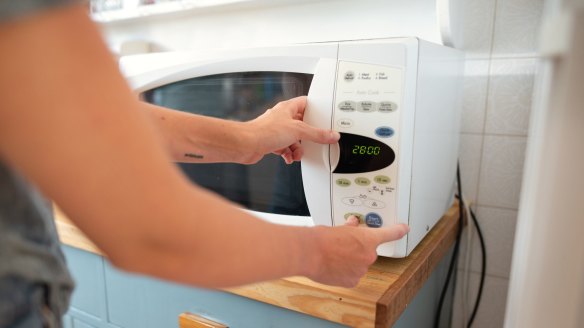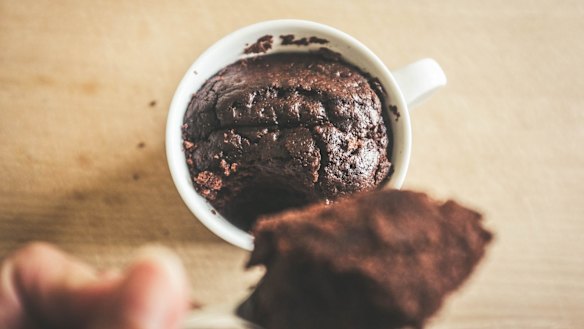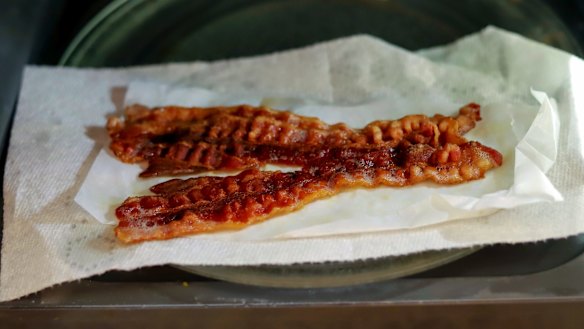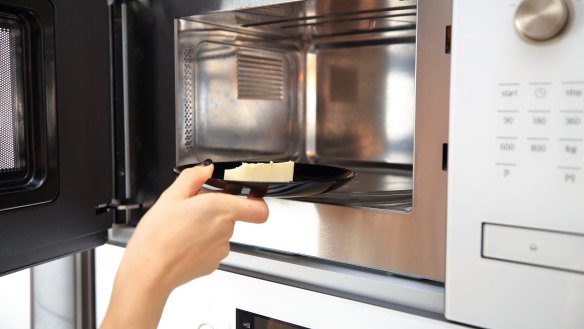Beyond reheating leftovers: How to use your microwave to bake, steam, fry and proof

The microwave is an essential appliance in my house. The two times my microwave went on the fritz and eventually broke in the past two years sent me into a panic. Now I have a shiny new one, and I'm appreciating the versatility of this handy kitchen staple to an even greater degree.
You can do so much more than reheat leftovers in a microwave, though that is what I use it for more than anything else. Here are a few more ways to get the most out of it.

Baking
If you're a fan of microwave mug cakes, you'll get no dissent from me (and skeptics, please let folks have their joy where they can). But I encourage you to think of other ways you can "bake" in your microwave. Case in point: Six-minute berry cobbler mugs. This recipe from cookbook author Nancy Baggett starts like many a mug cake, heating a mix of flour, sugar, cinnamon and salt, followed by the addition of butter. The topping is then portioned over a mix of your pick of fresh or frozen fruit before one last round in the microwave. Voila – mini cobblers. She takes a similar approach with her super-quick "baked" fruit and yoghurt mug, where the juices of the cooked fruit are mixed with yoghurt for an attractive, tasty parfait.
Steaming
The microwave is a great option for steaming vegetables when you don't have the equipment or inclination to do it on the stovetop. For small frozen vegetables, such as peas or corn, I put them in a bowl with just a tablespoon or so of water, cover with a plate and microwave until they're done. That kind of food is ready generally in less than 3 minutes, though many packages offer guidance on microwave cooking. Squash, potatoes, broccoli, cauliflower, snap peas and snow peas are also good candidates for microwave steaming. Larger items do well in shallow baking dishes, again with a few tablespoons of water. You can use a vented glass or silicone lid or plastic wrap with some holes punched into it. Heat on high until tender enough to be pierced with a fork or knife tip.

'Frying'
As Baggett explains, "Microwave ovens cannot only steam food, but in some situations can toast, fry and even caramelise. And that makes all the difference. All sorts of dry or low-moisture ingredients – flour, sugar, nuts, uncooked rice, onions, celery, bacon and many more – can go from raw-tasting to mellow, aromatic and even crisp with a minute or two of 'micro-toasting' or 'micro-frying.'" In her recipe for microwave-baked potato, bacon, chive and cheese soup mugs, for example, she microwaves a few slices of bacon in between layers of paper towels until brown and crisp. America's Test Kitchen is also a proponent of microwave frying, especially with alliums, though it has offered suggestions on how to crisp olives, capers and herbs, too. Make microwave-fried shallots by heating ½ cup vegetable oil with 3 thinly sliced shallots for 5 minutes, then stir every 2 minutes until they begin to brown, 4 to 6 more minutes. Drop the stirring increments to 30 seconds and microwave until deeply golden brown, up to 2 more minutes, then drain on a paper towel and season with salt.
Proofing dough
I don't know whether I'll ever have a kitchen kitted out with a proofing drawer a la Great British Baking Show. The microwave, however, makes a pretty good alternative when you need a warm, draft-free spot to let bread dough rise. Place a cup or small bowl of hot water in the microwave – or heat in there first – and then pop in your covered dough. While I can't really envision a circumstance in which someone would turn on the microwave without first opening the door, it's never a bad idea to put a sticky note on the front of the appliance as a heads-up. Bonus points if you also write down the time you started your proof.

Melting
I almost never melt butter on the stovetop, unless I am planning to do other prep there as well. It's usually a safe bet to do it in the microwave, though some appliances may be powerful enough to cause the butter to explode. If you're unsure about how melting butter will go in your microwave, or if you've had similar blow-ups, try using reduced, instead of full, heat for a gentler approach (this is often controlled with a "power level" button). Covering the bowl or measuring cup with wax paper is added insurance. That being said, investigate whether your microwave has a melt function. My new one does, and I love it, especially because it doesn't go at full power and allows you to specify how much you're melting. I also often melt chocolate in the microwave. Like butter, slow and steady is better, as chocolate that's overheated can easily be ruined. My melt function has a chocolate option, too. The reduced heat combined with frequent stirring makes this a relatively mess-free strategy when you don't want to bother with a double boiler on the stovetop.
Drying herbs
Keep this tactic in mind for summer when your herb plants go wild. The Oregon State University Extension Service says you should never dry more than 1 to 2 cups at a time and recommends you check your microwave instructions for guidance. Layer the herbs between two sheets of plain white paper towels (recycled paper towels may contain scraps of metal that can arc, it says). "A general guide for drying 1 cup of herbs is to cook on high for 1 to 2 minutes in 700-1200-watt ovens; 2 to 4 minutes in 650-700 watt ovens; and 3 to 6 minutes in 500-600 watt ovens. Stir the herbs every 30 seconds after the first minute until almost dry, and then let them finish drying at room temperature."
The Washington Post